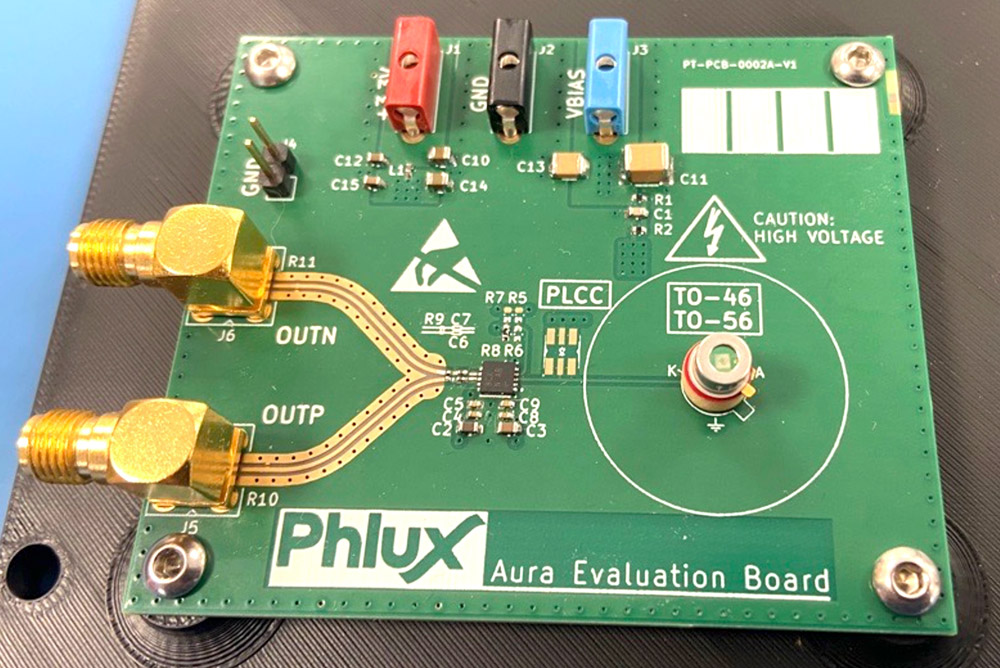News: Optoelectronics
9 July 2025
Phlux makes available evaluation board for Aura Noiseless InGaAs APDs
Phlux Technology — which was spun off from the University of Sheffield in 2020 — is offering an evaluation board for its Aura family of Noiseless InGaAs avalanche photodiodes (APDs). The APDs are used as 1550nm infrared sensors and claim 12x greater sensitivity than traditional devices in applications spanning laser rangefinders, optical networks and test equipment, and LiDAR.

Picture: The Phlux Aura APD evaluation board for 1550nm IR sensors.
Phlux’s Noiseless InGaAs APD technology adds an antimony (Sb) alloy to the indium gallium arsenide structure. The resulting devices operate with an internal gain of up to 120 or beyond, enabling the weakest signals to be detected above the noise floor. They are also claimed to exhibit greater temperature stability and faster large-signal recovery than traditional InGaAs infrared sensors.
Available to order now, the 70mm x 60mm evaluation board, which comes with a MAX40661 transimpedance amplifier, is designed to accelerate design and development by simplifying the evaluation and measurement of Phlux’s Aura line of APDs (200µm, 80µm and 30µm devices). Customers can quickly set-up measurements such as APD dark current, responsivity, noise equivalent power (NEP), input referred noise (IRN) and dynamic characteristics like impulse response, rise and fall times, and output swing to compare with existing designs. The board has a protected DC-coupled input and an AC-coupled differential or single-ended output via 50Ω SMA connectors. It requires a single, low-noise +3.3V DC power supply, and the recommended Vbias is preset to meet the required level of responsivity. It is recommended for use with a 250MHz-bandwidth oscilloscope.
The evaluation board accepts hermetically sealed TO-46 or TO-56 packaged APDs or ceramic PLCC6 SMD packaged devices with a quartz window. These packages are supported by Phlux, but the board also allows for performance comparison with other commercially available devices in similar formats.
In addition to the evaluation board using the MAX40661 COTS preamplifier, Phlux has developed an ultra-low-noise preamplifier circuit from discrete components to enable best-in-class NEP performance of <30fW/√Hz for demanding rangefinder and LiDAR applications with up to 75MHz bandwidth using the Aura 200µm APD. This design is suited to defence applications.
Phlux adds high-speed, high-bandwidth 30µm APDs to the Aura family of 1550nm IR sensors
Noiseless InGaAs IR sensor firm Phlux raises £9m in Series A round









